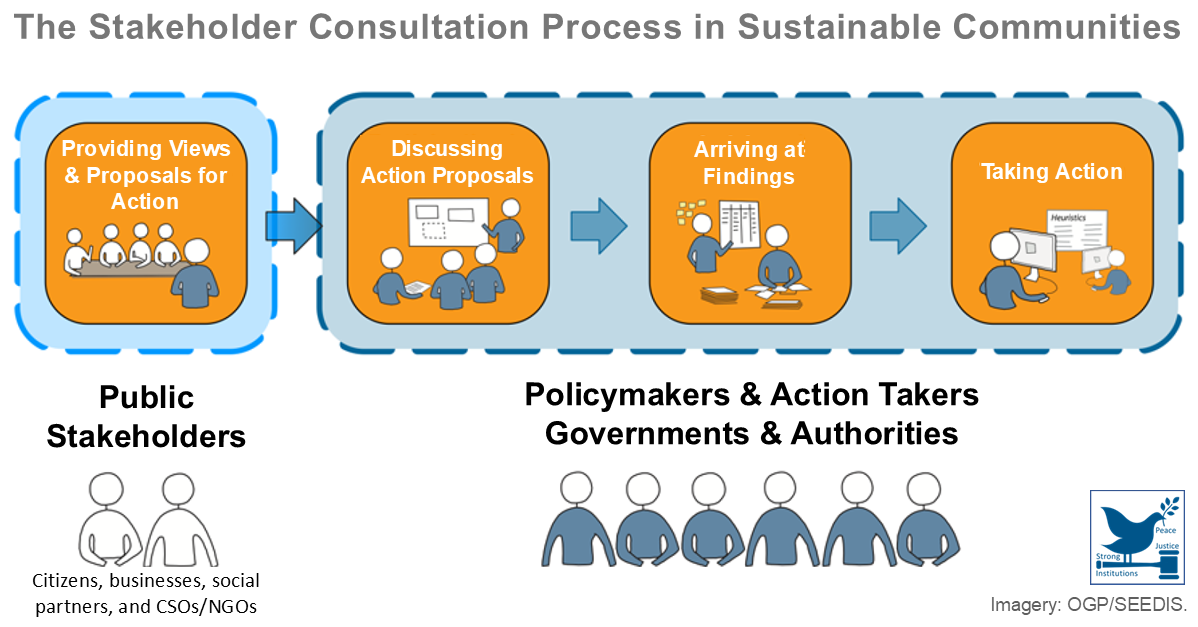Ness, David. "Growth in Floor Area: The Blind Spot in Cutting Carbon". Emerald Open Research. May 26, 2021. https://emeraldopenresearch.s3.amazonaws.com/...
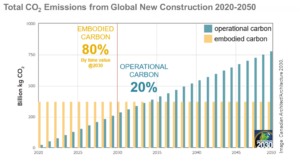 The construction sector has focused mainly on improving its energy efficiency and the substitution of fossil fuels to decarbonize buildings. It has largely ignored the threat from the continued growth in the built environment. This article argues that embodied carbon in buildings can be reduced only at the strategic planning level and through the use of low-carbon materials. Given the urgency, climate emergency, and increasing scarcity of resources, sufficiency and sustainability solutions must be promptly implemented to support the required services while consuming fewer resources. However, it suggests that the solutions are too much at odds with existing business models.
.
The construction sector has focused mainly on improving its energy efficiency and the substitution of fossil fuels to decarbonize buildings. It has largely ignored the threat from the continued growth in the built environment. This article argues that embodied carbon in buildings can be reduced only at the strategic planning level and through the use of low-carbon materials. Given the urgency, climate emergency, and increasing scarcity of resources, sufficiency and sustainability solutions must be promptly implemented to support the required services while consuming fewer resources. However, it suggests that the solutions are too much at odds with existing business models.
.
Posted on 15/01/22
Recent Abstracts
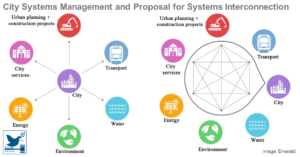
Saving the World through Zoning: The Sustainable Development Code, Regeneration, and Beyond
It is primarily the responsibility of local governments to protect the citizens and biosphere of their communities. To regulate the development of the built environment and land use, cities integrate sustainability into their plans and implement them through zoning and local building codes. Increasingly, local govern ...
Posted on 11/07/22
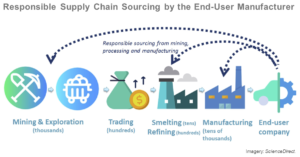
ESG Investing Has a Sustainability Blind Spot: Supply Chains
ESG agencies don't consider the global supply chains that support company operations when measuring and rating their ESG performance. Where ESG rating agencies ignore supply chains, the companies cherry-pick the metrics that boost their environmental and social sustainability ratings and ESG reporting. Biased perform ...
Posted on 08/07/22

Understanding the Effects of Environment, Social, and Governance Conduct on Financial Performance: Arguments for a Process and Integrated Modelling Approach
Current studies do not question the environmental (E), social (S) and governance (G) weightings assigned by rating agencies. Research findings on ESG conduct and financial performance of companies are inconclusive because they depend on relatively under-explored model specifications. Nor has research identified or ex ...
Posted on 06/07/22
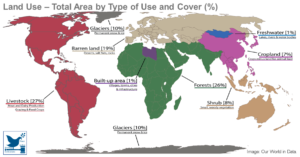
A Guide to Sustainable Urbanization and Land-Use
Land use must be managed and regulated to mitigate climate change, improve accessibility, enhance competitiveness, restore degraded biospheres, and promote social cohesion. This guide shares stakeholder experiences and increases their involvement and sense of responsibility, to gain broad political support for land-us ...
Posted on 04/07/22

World Cities in Terms of the Sustainable Development Concept
The sustainable development of cities requires significant investment, particularly in social development, purification, and preservation of urban nature from anthropogenic impacts. The analysis results in the systematization of the sustainable development criteria used in compiling the world cities rankings and deter ...
Posted on 01/07/22
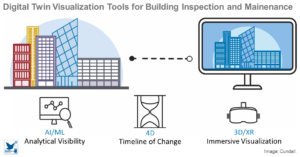
The Thinking Building – A Complete Guide to Smart Buildings in APAC
Any building can benefit from smart building innovation and approaches to deliver the best value return on investment for owners and facilities managers. This guidebook by Cundall tackles some common questions and smart building misconceptions. It explains the pathways for buildings to improve performance and the occup ...
Posted on 29/06/22
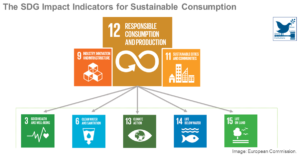
Pathway to Net Positive Hospitality
The future of tourism and the hospitality industry increasingly depends on protecting the unique and alluring locations in which hotels are located and operate. The Pathway to Net Positive Hospitality published by the Sustainable Hospitality Alliance offers simple and practical solutions that have a net positive impac ...
Posted on 27/06/22
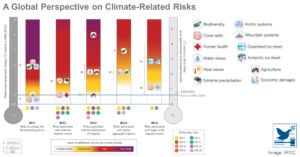
Achieving Global Biodiversity Goals by 2050 Requires Urgent and Integrated Actions
Top-level science-policy documents increasingly call for urgent transformative change to address the rapidly escalating global biodiversity crisis. The proposed actions in the new Post2020 Global Biodiversity Framework (GBF) could potentially bend the curve for biodiversity – but, only if promptly implemented and in a ...
Posted on 24/06/22
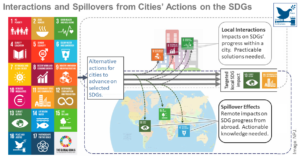
The SDGs in Austrian Cities: A Comparison between 2017 and 2021
Municipalities rely on the national governments for information, training, and financing to implement the Sustainable Development Goals (SDGs). This survey cites the main challenges for Austrian municipalities in adopting and implementing the SDGs and shows the need for urgent action at local, regional and national le ...
Posted on 20/06/22
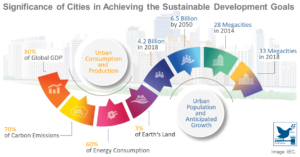
Guidance on Integrating the Sustainable Development Goals in Urban Climate Change Adaptation Projects
The application of the UN Sustainable Development Goals (SDGs) locally is critically important and decisive in achieving the sustainable development of countries. This guidance is based on both academic literature and professional experience in the field and is aimed at all professionals who work with climate change a ...
Posted on 17/06/22
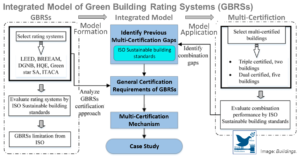
Is Sustainability Certification in Real Estate Worth It? – Evidence from European Office Markets
This analysis of European office space over a five-year period (2016–mid-2021) shows that the stock made up of certified buildings is steadily rising. In certified buildings, leasing velocity was generally higher, vacancy risk lower, and an average rent premium of 21% was observed. As countries increasingly announce ...
Posted on 15/06/22
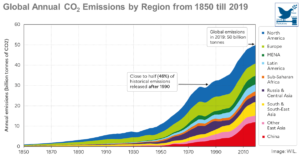
Sustainable Development – Historical Roots of the Concept
The origin of the sustainable development concept and the idea of sustainability evolved over the centuries. This paper reviews the evolutionary process, going far back in history to the root of the concept, and the paradigm shift, when sustainable development became mission critical for humanity. The environmental d ...
Posted on 13/06/22

Tourism for SDGs – Welcome to the Tourism for SDGs Platform!
Hospitality and travel are critical in delivering sustainable solutions for people, the planet, and prosperity. Tourism comprises around 10% of GDP, 30% of services exports, and 10% of jobs globally. It has the potential to contribute, directly or indirectly to all 17 of the UN Sustainable Development Goals (SDGs) an ...
Posted on 10/06/22
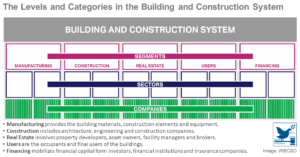
The Building System Carbon Framework
A common carbon framework across sectors is becoming increasingly important as policymakers struggle to set more ambitious carbon reduction goals. The Building System Carbon Framework bridges embodied and operational carbon and is neutral on materials and solutions. It enables users to identify the best emissions-red ...
Posted on 08/06/22
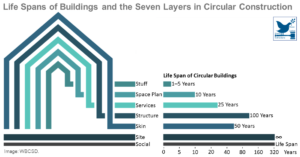
3 Ways Sustainable Construction Can Forge a Greener Future
The UN Climate Change Conference starting today, 6 June, in Bonn is where government delegates, observers and various experts gather to “begin taking stock of where the world stands when it comes to implementing the Paris Climate Change Agreement”. Real and lasting (sustainable) change call for commitment and leadersh ...
Posted on 06/06/22

